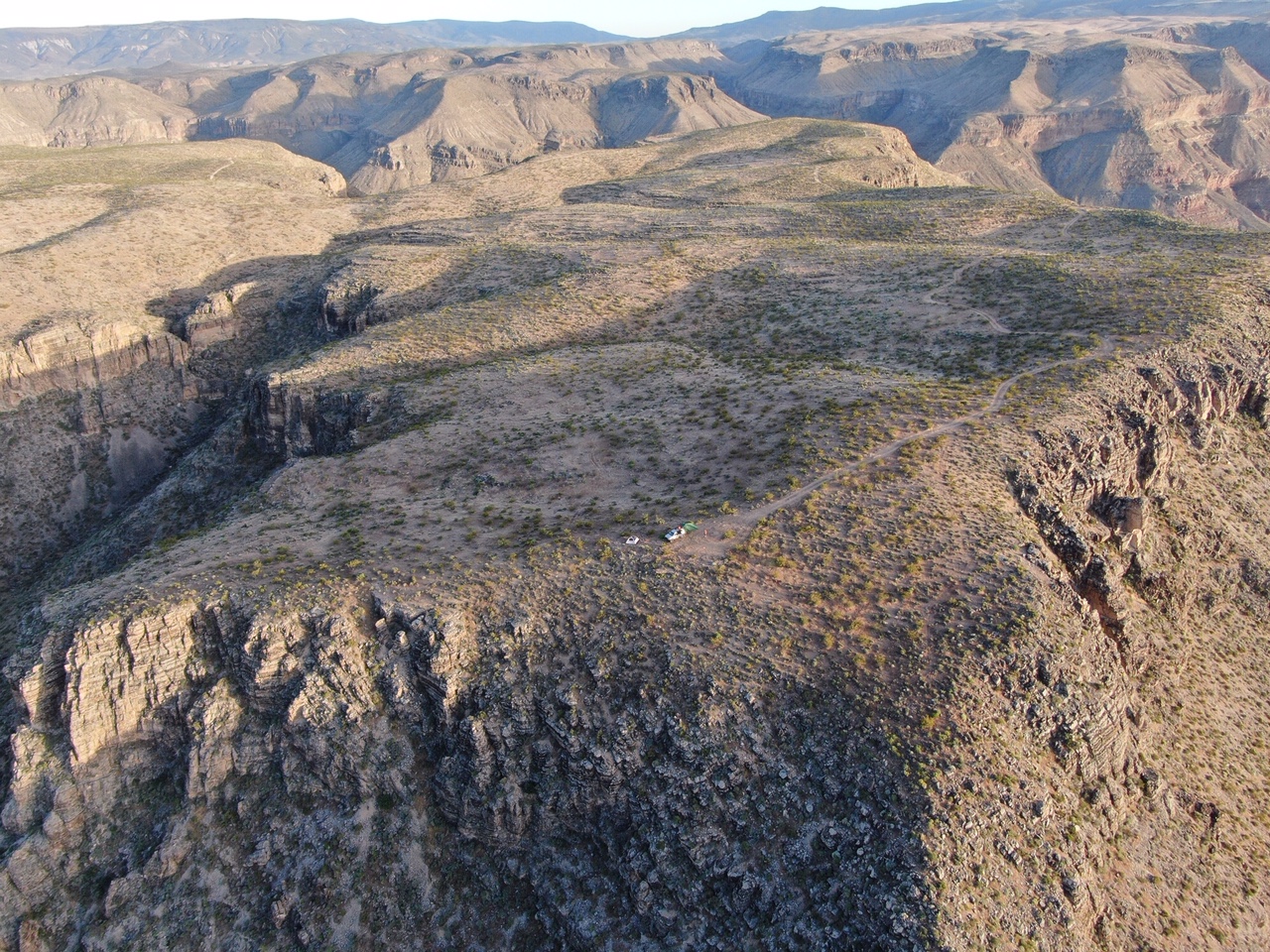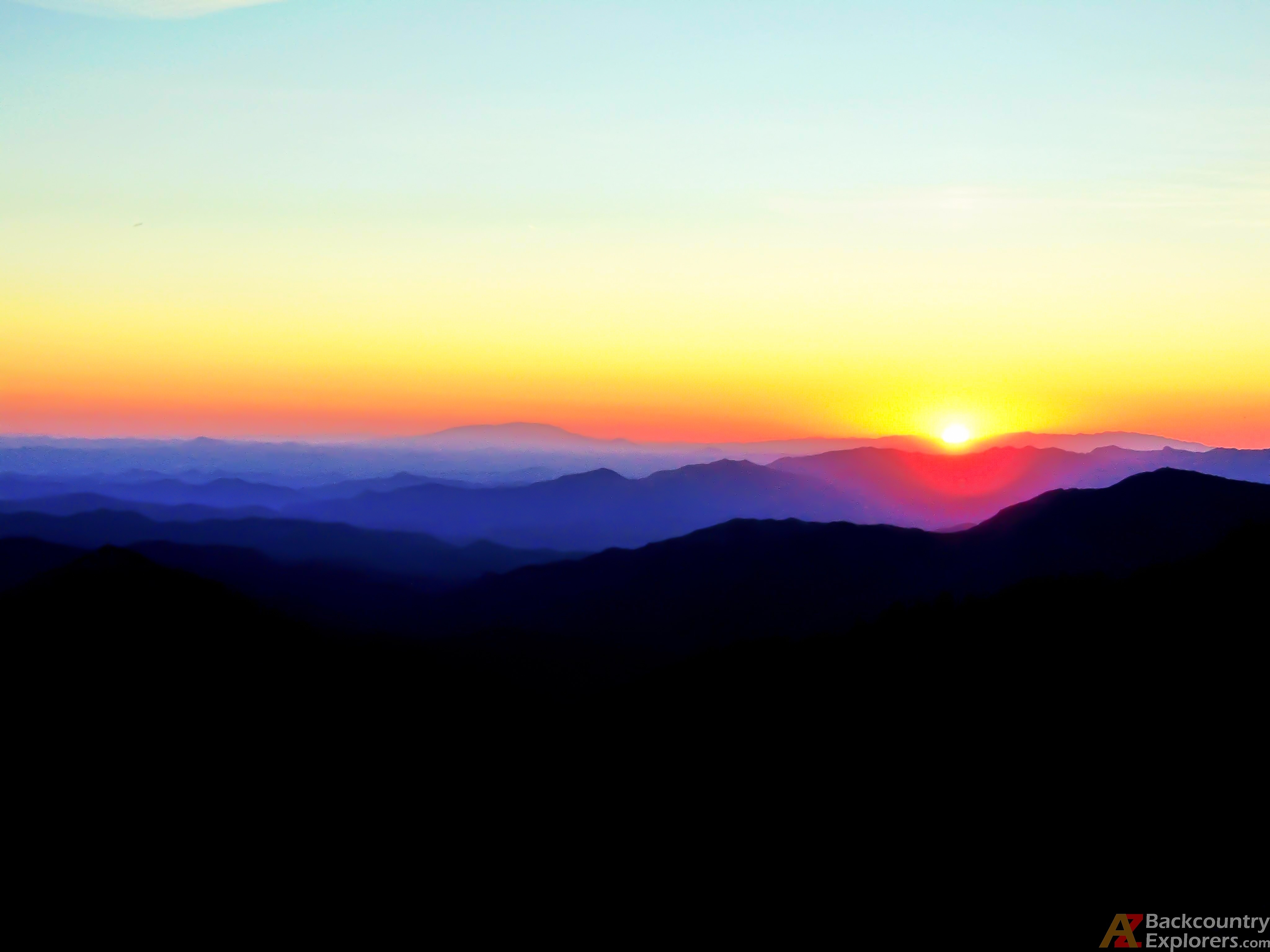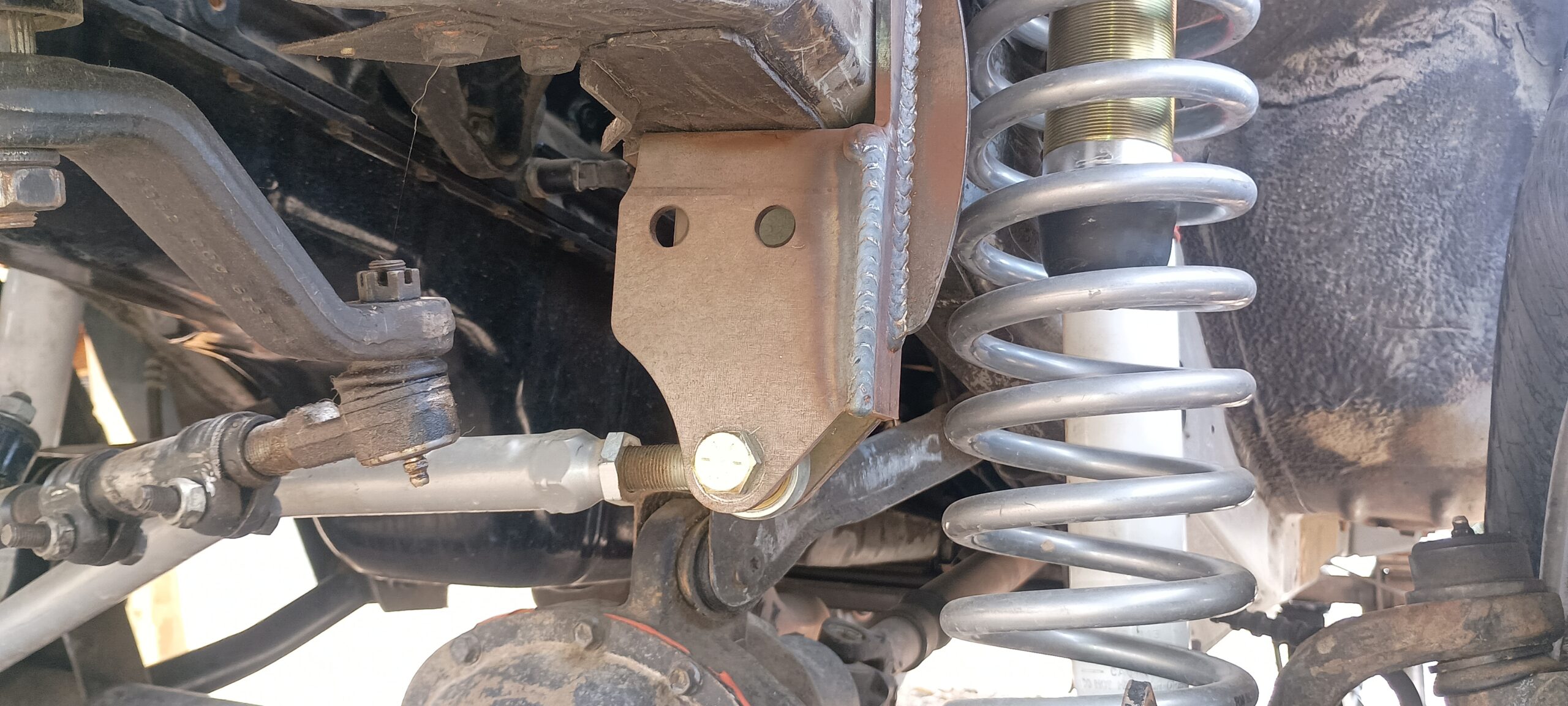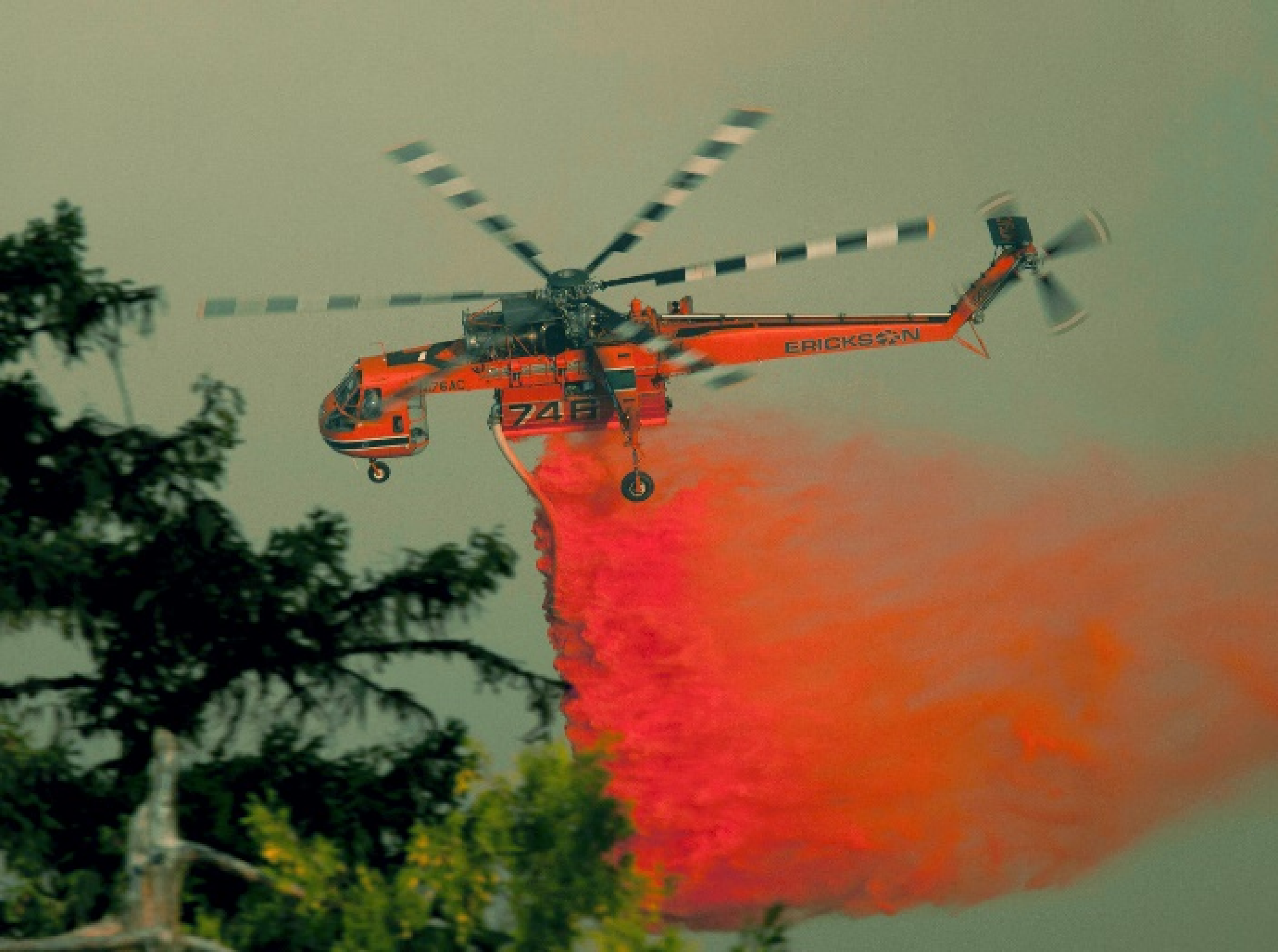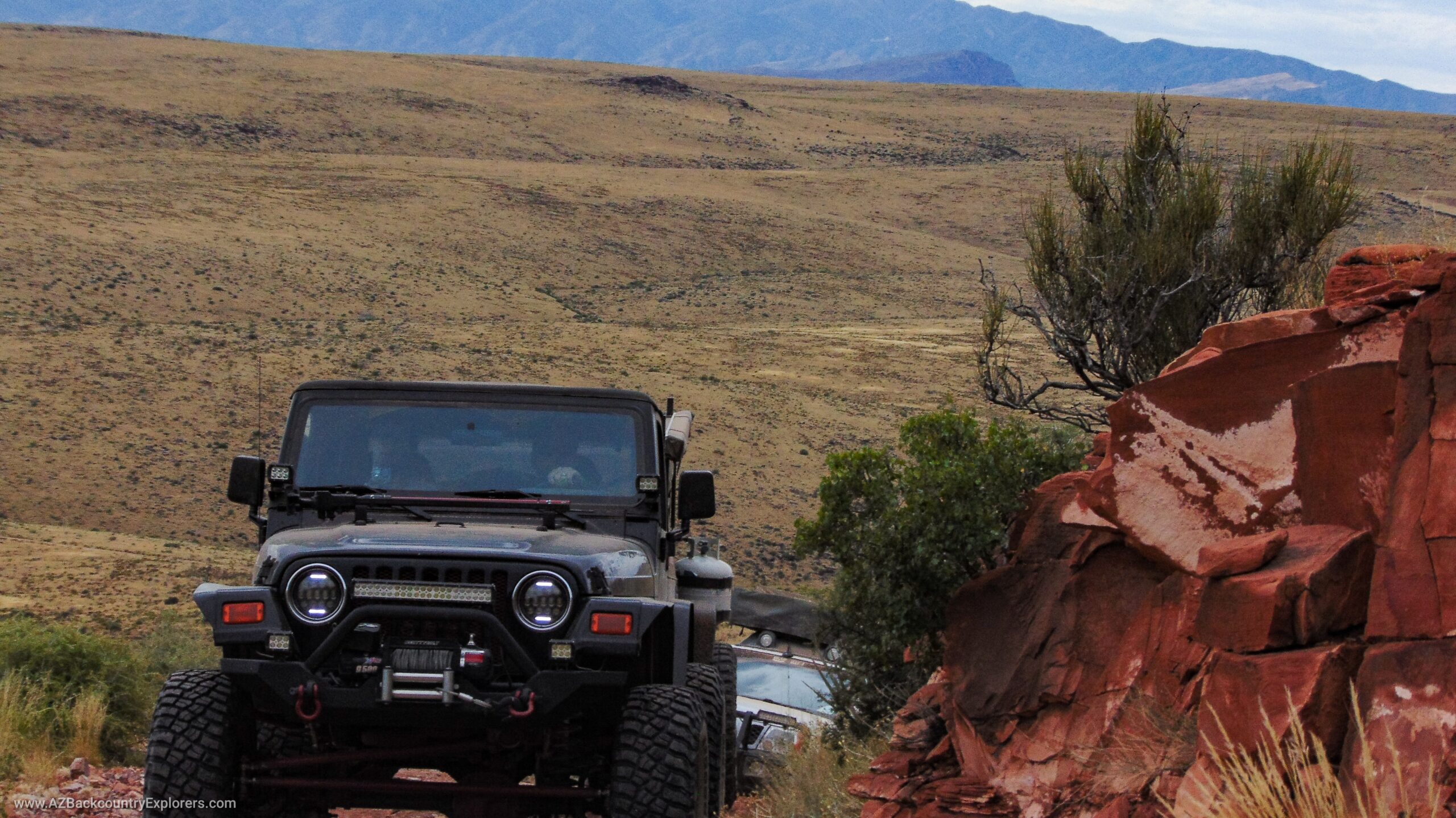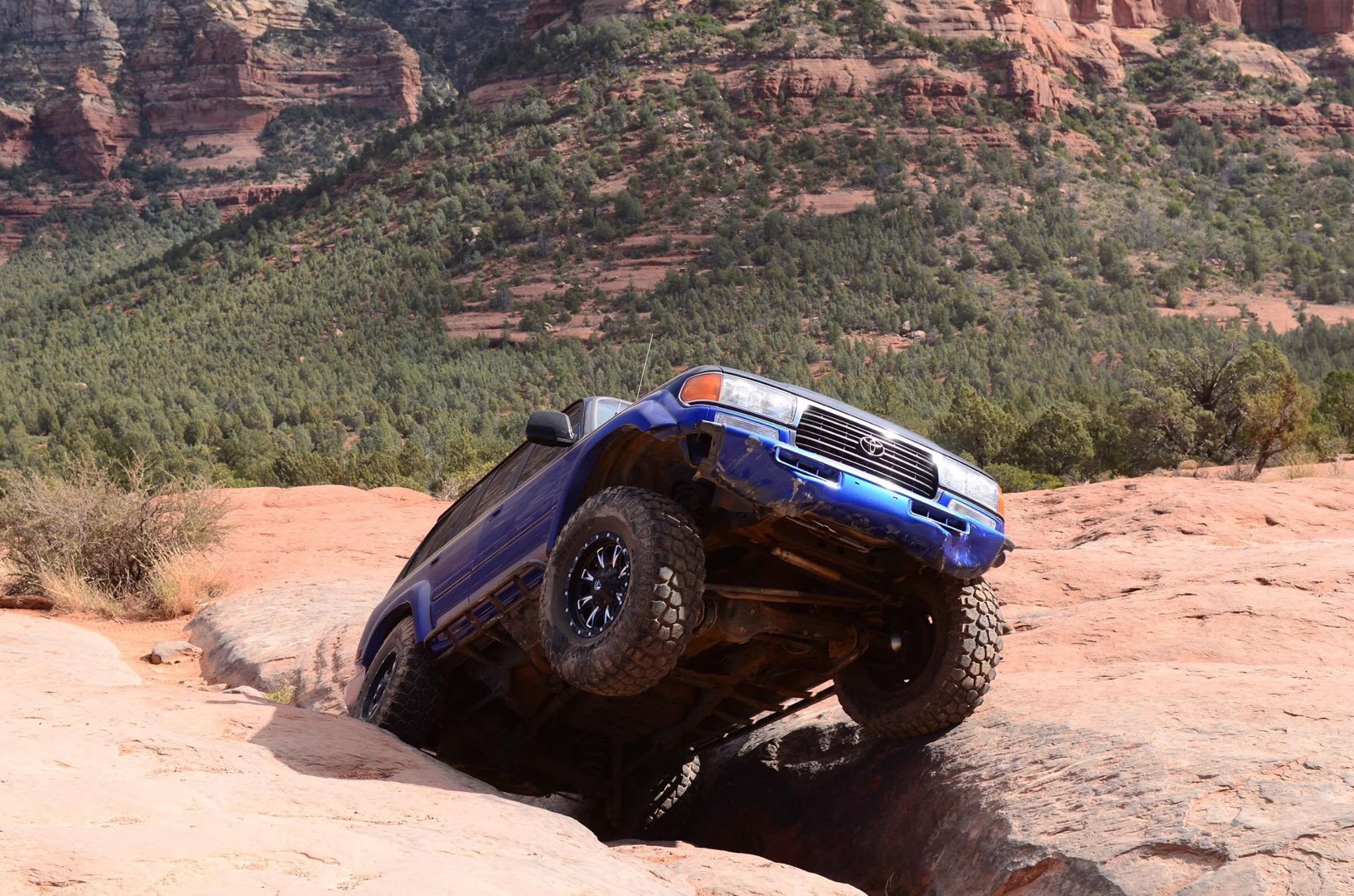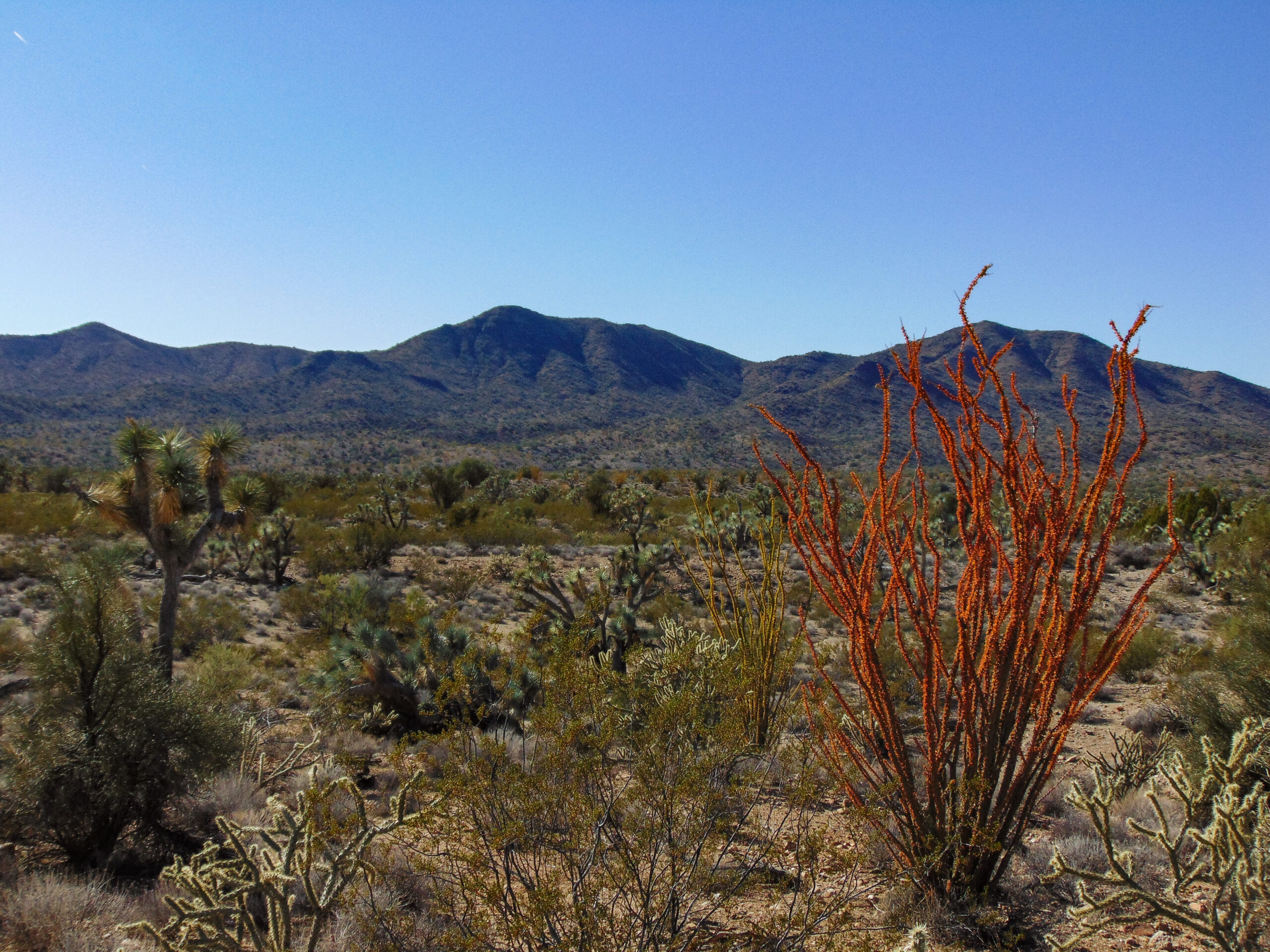Introduction
The Arizona desert is a harsh and unforgiving environment that can quickly become a survival challenge. To navigate this challenging landscape successfully, it’s crucial to have a solid understanding of the unique challenges it presents and the survival skills necessary to overcome them. This comprehensive guide will provide you with detailed instructions on various aspects of surviving in the Arizona desert, covering everything from water procurement and shelter construction to food foraging, navigation, safety, and rescue strategies. By following these guidelines and maintaining a resilient mindset, you can enhance your chances of survival and make it back to civilization safely.
1. Understanding the Arizona Desert
Before diving into survival techniques, it’s essential to comprehend the Arizona desert’s distinctive characteristics, which will profoundly impact your survival strategy.
1.1. Climate and Temperature
The Arizona desert is notorious for its extreme temperatures. Daytime highs can exceed 100°F (37.8°C), posing a significant risk of heat-related illnesses. Conversely, nighttime temperatures can drop dramatically, so you must be prepared for both extremes.
1.2. Limited Water Sources
Water sources are scarce and often seasonal in the desert. You may have to travel long distances to find water, and when you do, it may be contaminated. Understanding where and how to find water is critical.
1.3. Flora and Fauna
The desert is home to various plant species, some of which are edible, while others are poisonous. Familiarize yourself with these plants to avoid potential hazards. Additionally, desert wildlife, including snakes and scorpions, can pose dangers that you should be aware of to stay safe.
1.4. Navigation Challenges
Navigating the vast Arizona desert can be challenging due to its vastness and diverse terrain. Developing strong navigational skills and having access to maps and compasses is vital for staying on course.
2. Prioritize Water Procurement
In the desert, water is your most precious resource. Dehydration can quickly lead to physical and cognitive impairment, so securing a safe water supply should be your top priority.
2.1. Water Sources
- Natural Springs: If you come across a natural spring, consider yourself fortunate. These are relatively rare but provide a reliable source of freshwater. Protect the source from contamination and ration your use.
- Cacti: Some cacti, such as the saguaro and barrel cactus, store water in their flesh. To tap into this source, carefully cut into the plant and collect the liquid. This should be done sparingly to avoid harming the cactus.
- Rainwater: If you experience rainfall, take advantage of it by collecting and storing rainwater in any available containers.
- Pools of Water on Rocks: In some rocky terrains, you may find pockets of water collected on rocks. These pools can be a valuable water source, especially after rainfall. Use a clean container to gather the water, being cautious of any debris that might have accumulated.
- Puddles: Temporary puddles formed after rainfall provide a short-term water supply. While not ideal, you can collect water from these puddles by using a cloth or bandana to filter out any large impurities.
- Man-made Wildlife Tanks: In certain areas, man-made wildlife tanks or ponds are constructed to provide water for animals. These can be an excellent source of water for both wildlife and humans in times of need. Exercise caution and respect when using these tanks, ensuring that you do not disturb the wildlife or damage the structure.
Remember, always treat any collected water before consumption to remove impurities and make it safe for drinking.
2.2. Water Purification
It’s crucial to purify any water you find to eliminate harmful bacteria and contaminants:
- Boiling: If you have a container and a fire source, boiling water for at least one minute is the most effective purification method. Boiling water ensures that harmful microorganisms are killed, making it safe to drink.
- Chemical Treatment: Water purification tablets or drops containing chlorine or iodine can be carried in your survival kit. Follow the instructions on the package for proper dosage and wait time.
- Charcoal Filtering: Charcoal filtering is an additional method to purify water. It involves passing the water through a layer of activated charcoal, which helps remove impurities and odors. This method is effective in reducing some chemical contaminants and improving the taste of the water.
- Sand Filtering: Sand filtering is a simple yet effective water purification method. It involves passing water through a filter made of sand or a combination of sand and other materials like gravel or cloth. The sand filter removes larger particles, sediments, and debris from the water, improving its clarity and quality.
- Portable Water Filters: Portable water filters are compact devices designed to remove contaminants from water. They typically use a combination of physical filtration, such as porous membranes or ceramic filters, and sometimes activated carbon to remove bacteria, protozoa, and certain chemicals. Portable water filters are lightweight and convenient for outdoor adventures or emergency situations, providing an on-the-go solution for accessing safe drinking water.
- Solar Disinfection: If you lack purification tablets or a fire source, you can use solar disinfection as an alternative method. Clear containers filled with water can be left in direct sunlight for several hours. The heat and ultraviolet (UV) rays from the sun will help kill most harmful microorganisms.
3. Shelter Construction
Building a shelter in the Arizona desert serves several critical functions, including providing protection from extreme temperatures, harsh sunlight, and potential wildlife encounters. Here are detailed instructions for constructing shelters:
3.1. Natural Shelters
- Rock Shelters and Caves: Look for natural rock formations, caves, or overhangs. These provide instant shelter from the sun and wind. Caves, in particular, offer additional protection and insulation against extreme weather conditions. When selecting a cave or rock shelter, ensure it is stable and not prone to rockfalls or collapse. It’s essential to be cautious when exploring these areas and to carry appropriate lighting equipment when venturing into caves. Remember to respect and preserve these natural wonders for future generations to enjoy.
- Canyons: If you find yourself near a canyon or slot canyon, these narrow spaces between high walls can offer shade and protection from the elements. However, be aware of flash floods in canyons during rainstorms and avoid them during inclement weather.
3.2. Improvised Shelters
- Sunshade: If you have a tarp, space blanket, or even a large piece of clothing, you can create a sunshade by suspending it between two anchor points. This helps block the intense sunlight and provides a shaded area underneath. Secure the corners of your shade material with rocks or other weights to prevent it from blowing away in the wind.
- Dugout Shelter: In sandy desert areas, consider digging a trench or pit large enough to provide shelter from the sun and wind. Line the trench with any available insulating materials, such as clothing or vegetation, to reduce temperature fluctuations inside. Ensure that the trench is deep enough to provide adequate protection when lying down and wide enough to accommodate your body comfortably. Digging the shelter may be physically demanding, so conserve your energy and stay hydrated while working.
- Mine Shafts: If you’re in an area with abandoned mine shafts, be cautious as they can be hazardous. Avoid entering any unexplored or unstable mine shafts. Instead, look for mine entrances that may provide some shelter from the sun and elements. However, exercise extreme caution and assess the structural integrity of any such entrance before seeking temporary refuge there.
- Vehicle: If you have access to a vehicle, it can provide temporary relief from the harsh desert environment. Park the vehicle in a shaded area if possible, or use a reflective sunshade on the windows to reduce the heat inside. Keep the windows slightly open for ventilation, but ensure your safety and security while doing so. Remember to stay near your vehicle in case of emergencies and have a plan in place in case your vehicle becomes inoperable.
Remember to always prioritize your safety and be aware of your surroundings.
4. Food Foraging in the Desert
While water is your primary concern, knowing what’s edible in the desert can supplement your diet and provide essential nutrients for survival. Here are instructions for foraging food in the desert:
4.1. Edible Plants
Here are ten survival plants that can be found in the Arizona desert:
- Prickly Pear Cactus: Both the pads (nopales) and fruits (tunas) of the prickly pear cactus are edible. To prepare nopales, carefully remove the spines and skin, then slice them into strips. You can cook them in various ways, such as stir-frying, grilling, or boiling. Tunas, the fruits, can be eaten raw after peeling away the skin. Be cautious when handling prickly pear cacti to avoid spines.
- Mesquite: Mesquite trees produce sweet pods that can be roasted and ground into flour. Harvest mature pods, roast them, and then grind them into a fine powder. Mesquite flowers are edible and can be consumed raw. Additionally, mesquite seeds can be used as a food source after grinding them into flour. When collecting seeds, look for mature pods, collect them, and then remove the seeds from the pods. Be sure to properly identify mesquite trees to avoid confusion with other species.
- Desert Mallow: The leaves and flowers of the desert mallow are edible and have a mild taste. Simply pluck young leaves or flowers and eat them raw. Desert mallow can be a valuable source of nutrition and hydration in the desert.
- Amaranth: Both the leaves and seeds of amaranth are edible and nutritious. Harvest young and tender leaves, then steam or sauté them like spinach or kale. To collect amaranth seeds, wait until the seed heads are fully mature and then thresh and winnow them to remove the chaff. Amaranth seeds can be ground into flour or used as a grain substitute in recipes.
- Jojoba: Jojoba seeds can be ground into a nutritious flour that can be used in baking. The oil extracted from jojoba seeds has various cosmetic and medicinal uses. It’s important to note that the seeds must be properly heated to safely extract the oil.
- Palo Verde: The green pods and seeds of the Palo Verde tree are edible and can be used as a food source. Harvest the pods when they turn brown and the seeds inside are fully developed. You can eat the seeds raw or roast them for a nuttier flavor.
- Cholla Cactus: The flower buds, young stems, and fruits (also known as cholla buds) of the cholla cactus are edible. You can boil or sauté the buds and young stems, similar to vegetables. The cholla buds have a unique flavor and can be enjoyed in various dishes.
- Dandelion: Although often considered a weed, dandelion leaves are edible and highly nutritious. Harvest young leaves and use them in salads or cooked dishes. Dandelion roots can be roasted and used as a coffee substitute.
- Yucca: Yucca plants produce flowers, fruits, and stalks that are all edible. The flowers can be eaten raw or cooked and have a slightly sweet taste. The fruits can be roasted or eaten raw when they are fully ripe. The stalks of some yucca species can be cooked and consumed.
- Mormon Tea: Also known as Ephedra, Mormon tea is a desert plant that can be used to make a herbal tea. It has been traditionally used as a stimulant and decongestant.
Remember, it’s crucial to thoroughly research and properly identify any plants before consuming them in the wild.
4.2. Edible Insects
- Ants: Some ant species are edible and provide a source of protein. In the Arizona desert, the honeypot ant is highly regarded as a delicacy by Native American tribes. These ants store a sugary substance in their bodies, which can be consumed by carefully collecting the “gasters” (abdomens). Additionally, the red harvester ant is known for its lemony flavor and is often roasted or used in traditional dishes.
- Grasshoppers: Grasshoppers and locusts are plentiful in the Arizona desert and can be captured and cooked for sustenance. Look for them around grassy areas, especially during the warmer months. Species like the lubber grasshopper and the Arizona bird grasshopper are good options. Remove the wings and legs before cooking. They can be roasted, fried, or ground into flour for use in bread or other recipes.
- Cactus Worms: The larvae of the Agave sphinx moth, also known as cactus worms, are a popular edible insect in the Arizona desert. These small, cream-colored worms can be found inside the agave plants, particularly in the heart of the agave stalk. Harvest them carefully and cook them by roasting, frying, or adding them to stews or other dishes.
- Mesquite Bugs: Mesquite bugs, also known as mesquite beetles or mesquite borers, can be found in abundance in the Arizona desert, especially on mesquite trees. These insects have a nutty and minty flavor, making them a unique addition to your diet. Harvest them by hand and remove the wings and legs before cooking. They can be roasted, sautéed, or even ground into a powder to flavor various dishes.
- Mescal Worms: Mescal worms, or the larvae of the Mescal longhorn beetle, are often found in the heart of mescal agave plants. These fat and juicy larvae are considered a delicacy and are enjoyed in various traditional Mexican dishes. To harvest and prepare mescal worms, carefully remove them from the agave plant and cook them by roasting or boiling.
Remember, when foraging for edible insects, always ensure proper identification and avoid consuming any species that may be toxic.
4.3. Fishing and Trapping
- Creekbeds and Pools: If you find water sources like creekbeds or pools, they may contain fish or other aquatic life. Look for signs of movement or ripples in the water. To catch fish, you can use improvised fishing gear like hooks made from thorns or bones, try to catch them by hand if they come close to the shore, or create a simple fish trap. To make a fish trap, form a cone-shaped structure out of rocks, leaving a small opening at the bottom. Position the trap in the water, ensuring that the opening faces upstream. As fish swim into the trap, it becomes difficult for them to find their way out. Be patient and check the trap regularly.
- Pitfall Traps: Constructing pitfall traps can be an effective way to capture small desert creatures, such as rodents or lizards. To create a pitfall trap, dig a hole in the ground and line it with leaves or other materials to make it more appealing to potential prey. Place a cover or lid over the hole, leaving a gap for the prey to fall in. Additionally, you can enhance the trap by constructing a funnel using sticks to guide the prey towards the hole. Be cautious while setting up the trap to avoid harm to yourself or unintended animals. Check the trap regularly, and be aware of any local regulations regarding trapping or hunting.
- Snares and Deadfalls: Another trapping technique for small animals is using snares and deadfalls. Snares consist of a simple loop made of cord or wire, placed in a pathway frequented by animals. As a creature passes through the snare, it tightens around its body, effectively trapping it. Deadfalls, on the other hand, involve creating a mechanism that will crush the animal when triggered. It often requires the use of branches, rocks, or logs. It’s essential to research local laws and regulations before using snares or deadfalls, as some areas may have restrictions on their use to protect wildlife.
- Bird Traps: If you’re trying to catch birds, constructing a bird trap known as a “snare noose trap” could be an option. Build a small perch with sticks and secure it to the ground, then create a noose using wire or string. Position the noose near the perch, making sure it’s at the appropriate height for the targeted bird species. Scatter some bait, such as seeds or insects, near the trap to attract the birds. When a bird lands on the perch and tries to reach the bait, it may step into the noose, tightening it around its leg. Remember to release non-target species unharmed, and always abide by local regulations and ethical considerations when trapping animals.
5. Navigation and Signaling
Effective navigation and signaling are crucial for staying on course and increasing your chances of being found in a survival situation.
5.1. Navigation Tools
- Star Navigation: In the vastness of the Arizona desert, stars can be your guiding lights. Learn to identify key constellations and use them to determine direction. Polaris, also known as the North Star, remains relatively fixed in the northern sky and can serve as a reliable point of reference. Consider carrying a star chart or using smartphone apps to assist with celestial navigation.
- Sun and Shadows: The position of the sun and the lengths of shadows can provide valuable information about direction and time of day. Understanding how the sun moves across the sky and the relationship between the sun and shadows can help you navigate in the absence of other tools. Additionally, shadows tend to be longer in the morning and evening, which can indicate the general direction of east and west.
- Topographic Maps: Alongside carrying a detailed map, consider using topographic maps that provide elevation information. Understanding the terrain’s contours, peaks, and valleys helps you anticipate obstacles and choose the safest routes. These maps also indicate water sources, which are crucial for survival in desert environments.
- Satellite Imagery: Utilize satellite imagery and mapping services available on smartphones or GPS devices. These tools offer aerial views of the Arizona desert, helping you identify landmarks, distinguish trails, and locate potential sources of water. Being familiar with these technologies increases your chances of successful navigation.
- Navigation Apps: Numerous navigation apps specifically designed for outdoor activities can be downloaded onto your smartphone. These apps provide features like GPS tracking, compasses, offline maps, and waypoints, making them valuable resources for navigation in unfamiliar desert terrain. Remember to keep your device charged and carry a backup power source.
- Magnetic Declination: Be aware of the magnetic declination in the region you’re exploring. This angle represents the difference between true north and magnetic north. Adjusting your compass readings to account for magnetic declination ensures accurate navigation. Consult reliable sources or online tools to determine the correct value for the area you’re in.
Remember, combining multiple navigational tools and techniques enhances your ability to navigate safely and effectively in the Arizona desert. Always prioritize safety, inform others about your plans, and be prepared with essential supplies for survival. Stay hydrated and dress appropriately for the desert conditions you may encounter.
5.2. Signaling for Help
- Signal Mirrors: If you have access to a reflective surface, such as a mirror or any polished metal object, you can use it to reflect sunlight towards potential rescuers. Align the mirror to reflect the sunlight in the direction of the search party or aircraft. Flash the reflective surface by tilting it to catch and reflect the light intermittently. This can be a highly effective long-distance signaling method in the Arizona desert.
- Visual Disturbance: Create visual disturbances to attract attention. Arrange rocks or other materials into recognizable symbols or patterns on the desert floor. These eye-catching patterns can serve as a visual cue for search teams overhead. Additionally, if you have access to brightly colored clothing or materials, use them to create conspicuous markers or flags that stand out among the desert landscape.
- Whistle or Shout: In an open desert environment, sound carries quite far. Utilize a whistle or yell at regular intervals to let potential rescuers know of your presence. Make sure to take breaks in between to listen for any potential responses or signs of approaching help.
- Torch or Flare: If available, light a torch or flare to generate a bright, high-contrast signal. Flares produce intense light and are particularly effective during low-light conditions or at night. Ensure you are in a safe area before igniting any fires, as the desert environment can be highly flammable.
- Signal Panel: Carry a pre-made signaling panel or construct one using brightly colored fabric or materials. Attach it to a sturdy support, such as a pole or tree, and position it in an open area to maximize its visibility. The contrast of the colors against the arid desert terrain can make it more noticeable from a distance.
- Dye or Ink: If you have access to brightly colored dye or ink, you can use it to create visible markings on rocks or the desert ground. This method works well if you anticipate helicopter or aerial search efforts, as the contrast between the dye or ink and the desert landscape can increase visibility.
- Personal Locator Beacons (PLBs): Consider carrying a personal locator beacon, which transmits an emergency distress signal to search and rescue authorities. This compact device, when activated, sends a distress signal with your location coordinates, expediting the rescue process. Always ensure your PLB is in good working condition and check local regulations regarding PLB usage.
- Stay Near Water Sources: Search teams are likely to focus their efforts around water sources in harsh desert environments like Arizona. Position yourself near natural water sources such as rivers, streams, or even stagnant ponds to increase the chances of being found.
- Flags and Markers: Use brightly colored flags or markers on tall poles to increase your visibility from a distance. Attach these markers to the top of a dune or an elevated spot to make them more easily noticeable from the air or from afar.
6. Safety and Health
Staying safe and maintaining your physical well-being are paramount in the desert. Consider the following safety and health tips:
6.1. Avoiding Dehydration
Survival situations in the Arizona desert can be extremely challenging, especially when it comes to staying hydrated. Here are some additional tips to help prevent dehydration:
- Purify Water: If you don’t have access to safe drinking water, learn how to purify water from natural sources such as rivers or springs. Techniques like boiling, using water filtration systems, or chemical treatment can help remove harmful contaminants.
- Strategic Water Consumption: Conserve water by drinking small sips throughout the day rather than large gulps. This helps stretch your water supply and ensures a more steady hydration.
- Water Sources: Familiarize yourself with potential water sources in the area, such as hidden springs, cacti, or dry riverbeds. Research local flora and fauna to identify edible plants or sources of water.
- Water-Loaded Foods: Consume foods with high water content, such as juicy fruits like watermelon and oranges. These can provide hydration and essential nutrients simultaneously.
- Preserve Sweating: Avoid excessive sweating by resting during the hottest parts of the day and by protecting yourself from the sun with clothing, hats, and sunscreen. Preserving body fluids is crucial in survival situations.
- Residual Moisture: If you find a water source, use techniques like soaking clothing or bandanas to collect and conserve residual moisture. Wrapping these damp items around your neck or forehead can provide a cooling effect.
- Body Heat Regulation: Maintain body temperature by seeking shade, avoiding direct sunlight, and using reflective materials to create shelters that deflect heat. This helps prevent excessive sweating and water loss.
- Prioritize Activities: Minimize physical exertion during the hottest times of the day and focus on necessary survival tasks during cooler periods, such as early morning or late evening when the temperature is lower.
- Mental Attitude: Stay calm and positive. Stress and panic can lead to increased sweating and dehydration. Conserve energy and maintain a clear mindset to optimize your chances of survival.
Remember, surviving in the desert requires preparation, knowledge, and resourcefulness. It is crucial to seek professional guidance or undergo proper training before venturing into such environments.
6.2. Heat-Related Illnesses
- Heat Exhaustion: Recognize the symptoms of heat exhaustion, which may include heavy sweating, weakness, nausea, and faintness. If you or someone in your group exhibits these symptoms, move to shade, hydrate, and cool the body by wetting clothing or using a damp cloth. Rest and monitor the affected person’s condition.
- Heatstroke: Heatstroke is a severe and potentially life-threatening condition characterized by high body temperature, confusion, and loss of consciousness. If someone experiences these symptoms, seek medical attention immediately. In the meantime, move the individual to a shaded area, remove excess clothing, and use any available means to cool them, such as applying water or wet clothing to the skin and fanning.
- Dehydration: In the arid climate of the Arizona desert, dehydration can occur rapidly. It is crucial to stay hydrated by drinking plenty of water and electrolyte-rich fluids. Avoid excessive alcohol and caffeine consumption as they can contribute to dehydration. Carry an adequate supply of water and drink regularly, even if you do not feel thirsty.
- Sunburn: The intense Arizona sun can cause severe sunburns. Protect your skin by wearing sunscreen with a high SPF, a wide-brimmed hat, and lightweight, light-colored clothing that covers your arms and legs. Seek shade during the hottest part of the day and avoid prolonged exposure to direct sunlight.
- Heat Cramps: Heat cramps are muscle spasms that can occur due to excessive sweating and electrolyte imbalances. If you experience muscle cramps, rest in a cool place, drink water or electrolyte-containing fluids, and gently stretch and massage the affected muscles.
- Heat Syncope: Heat syncope refers to fainting or lightheadedness caused by low blood pressure. To prevent heat syncope, avoid sudden changes in body position, drink plenty of fluids, and take breaks in shaded areas. If you feel lightheaded, sit or lie down, elevate your legs, and drink water or a sports drink.
- Heat Rash: Heat rash, also known as prickly heat, is a skin condition caused by blocked sweat ducts. To prevent heat rash, wear lightweight, breathable clothing and keep your skin dry. If heat rash develops, move to a cooler area, gently cleanse the affected area, and keep it dry to promote healing.
- Heat-related Asthma: High temperatures can exacerbate asthma symptoms in some individuals. Carry your prescribed asthma inhaler at all times, avoid strenuous activities in extreme heat, and seek medical advice if you experience difficulty breathing or a worsening of asthma symptoms.
- Hyponatremia: In rare cases, hyponatremia, a condition caused by low sodium levels, can occur if excessive water consumption dilutes electrolytes in the body. While it is essential to stay hydrated, be mindful not to consume excessive amounts of water without replenishing electrolytes through food or sports drinks.
6.3. Wildlife and Insects
- Rattlesnakes: Rattlesnakes are prevalent in the Arizona desert and their venomous bites can be life-threatening. Take extra precautions when hiking or exploring the desert. Stay on established trails, wear protective footwear, and be cautious when reaching into rock crevices or tall grass. If you encounter a rattlesnake, maintain a safe distance and slowly back away. Seek immediate medical attention if bitten, as anti-venom treatment is necessary.
- Gila Monsters: Gila Monsters are venomous lizards found in the Arizona desert. Though their bites are rare, they can be extremely painful and cause swelling. If bitten, stay calm, keep the affected area immobile, and seek medical attention immediately. Avoid handling or approaching these animals, as they are generally shy and will only attack if threatened.
- Black Widow Spiders: Black Widow spiders are known to inhabit the Arizona desert. Their bites can cause severe pain and may lead to symptoms such as muscle aches, cramps, and nausea. If bitten, clean the wound with mild soap and water, apply a cold compress, and seek medical attention. It is important to identify and eliminate any spider hiding spots around your home or campsite to minimize encounters.
- Scorpions: Scorpions are common in the Arizona desert, and while most species are not life-threatening, their stings can be painful and cause localized swelling. Shake out shoes, clothing, and bedding before use, as scorpions often seek refuge in dark places. If stung, clean the area with mild soap and water, apply a cold compress, and monitor for any severe reactions. Seek medical attention if symptoms worsen or persist.
- Tarantulas: Tarantulas are large, hairy spiders found in the Arizona desert. Despite their intimidating appearance, their bites are typically harmless to humans, causing only mild pain or irritation. If you encounter a tarantula, it is best to leave it alone and observe from a safe distance. Avoid handling the spiders, as some individuals may have allergies or sensitivities to their venom.
- Kissing Bugs: Kissing bugs, also known as assassin bugs, can transmit Chagas disease through their bites. These bugs are typically found in cracks and crevices near human dwellings. If you suspect a kissing bug bite, cleanse the area with soap and water and monitor for any symptoms such as fever, fatigue, or swollen lymph nodes. Seek medical attention if necessary.
7. Rescue and Contacting Authorities
In a survival situation, your ultimate goal is to be rescued. Follow these guidelines to increase your chances of being found:
7.1. Stay Put
- Don’t Wander: Once you realize you’re lost or in a survival situation, stay put and avoid aimless wandering. Moving around can make it harder for search teams to locate you. Choose a safe and visible location to establish your base and remain there until help arrives.
7.2. Signaling
- Signal Regularly: Continue to signal for help using any available means, such as fires, markers, or visual signals. Consistency is key, as search teams may be scanning the area intermittently.
- Use Reflective Materials: With the intense desert sun, utilizing reflective materials can greatly enhance your chances of being spotted. Consider using a mirror, aluminum foil, or any other shiny object to catch the attention of search and rescue teams.
- Create Signaling Patterns: Rather than relying solely on sporadic signals, try establishing an intentional pattern to signal distress. For example, three short bursts of a whistle followed by a pause can be a recognized distress signal. This consistent rhythm can help rescuers identify your distress call.
- Build an SOS Sign: Use rocks, branches, or any other available materials to create a visible SOS sign on the ground. This universally recognized distress signal can attract immediate attention from aircraft or ground search teams.
- Utilize Smoke Flares: If you have access to a smoke flare, use it during daylight hours to create a column of thick smoke. This stands out against the desert landscape and can be easily spotted from a distance.
- Consider Audio Signals: In addition to visual signals, sound can also be effective in grabbing attention. Use a whistle or loud noise-making device to create sharp, distinct sounds. This can alert nearby individuals or search parties to your whereabouts.
Remember, it’s essential to stay calm and ration your energy while waiting for rescue. Keep in mind that these tips should be adapted to your specific situation and surroundings, prioritizing your safety at all times.
7.3. Emergency Communication
- Cell Phones: Use your cell phone sparingly to conserve battery power. Send texts or use signaling apps to communicate your situation and location if possible. Keep your phone in a protected, shaded area to prevent it from overheating. If you need to signal aircraft, you can use your phone’s flashlight to create a flashing signal. Shine the light towards the aircraft in a repeated pattern, such as short flashes in a series. This visual signal can help rescuers locate your position.
- Emergency Beacons: If you possess a Personal Locator Beacon (PLB) or satellite communicator, use it according to the manufacturer’s instructions. These devices can send distress signals with your GPS coordinates to search and rescue authorities, greatly increasing your chances of being located by aircraft. Make sure to activate the beacon and keep it in an open area where it has a clear view of the sky to maximize its effectiveness.
- Signal Mirrors: Carry a signal mirror, ideally one designed for survival situations, and use it to reflect sunlight toward potential search aircraft. Hold the mirror close to your eye and aim the reflected light towards the aircraft. Move the mirror slowly and steadily to create flashes. If you spot an aircraft, keep signaling it by continuing the flashes until you are certain that you have been seen.
- Ham Radios and Repeaters: In the Arizona desert, ham radios can be a valuable means of communication. If you have prior knowledge, experience, and the necessary equipment, you can use ham radios to reach out to fellow enthusiasts or emergency services via local repeaters. Check if there is a net or emergency frequency designated for search and rescue operations in your area. Make your presence known to aircraft by transmitting distress calls, providing them with crucial information about your location and situation.
- Morse Code: Familiarize yourself with Morse code as it can be an invaluable tool in emergency situations. Morse code is a method of communication using dots (.) and dashes (-) to represent letters and numbers. Learn how to transmit an SOS signal in Morse code (· · · – – – · · ·) which is universally recognized as a distress call. You can use sound, light signals, or even taps on a surface to convey Morse code. This method becomes especially useful when signaling aircraft. If you see an aircraft overhead, use a flashlight, mirror, or any readily available reflective surface to create Morse code signals. Aim the signals towards the aircraft, creating a clear and distinct pattern to attract attention.
8. Grab and Go Bag
To ensure your preparedness for survival in the Arizona desert, it is crucial to have a well-equipped grab and go bag. This bag should contain essential items that will help you navigate the challenges and follow the guidelines provided in this comprehensive guide. In addition to the items mentioned in earlier sections, here is a checklist for your grab and go bag:
- Water: Carry a sufficient supply of water bottles or portable water containers. Aim for at least one gallon (3.8 liters) of water per person per day, considering the activity level, climate, and anticipated duration of your desert adventure. An ideal grab and go bag should have at least three days’ worth of water supply.
- Food and Snacks: Pack non-perishable food items that require minimal preparation, such as energy bars, dried fruits, nuts, jerky, and canned goods. Include a small stove, cooking utensils, and lightweight cookware for heating and cooking meals if necessary. Remember to choose high-calorie, nutrient-dense foods to sustain your energy levels.
- Shelter: Include a lightweight, compact tent or emergency shelter in your grab and go bag. This provides protection from the elements and can serve as a critical refuge during extreme weather conditions. A compact sleeping bag or bivvy sack will also provide insulation and warmth during cold desert nights.
- First Aid Kit: Your grab and go bag should contain a comprehensive first aid kit that includes adhesive bandages, gauze pads, antiseptic wipes, adhesive tape, scissors, tweezers, pain relievers, and any personal medication you may require. Additionally, include a first aid manual to guide you in administering basic medical care.
- Fire and Light: Carry waterproof matches, lighters, or fire starters to help you start a fire for warmth, cooking, and signaling purposes. Include a dependable flashlight with extra batteries, as well as glow sticks or chem lights for emergency lighting.
- Navigation Tools: Pack a reliable compass, topographic maps of the area you’ll be exploring, and a GPS device if available. These tools will assist in orienteering, tracking your movements, and finding your way in the vast desert landscape.
- Multi-tool and Knife: Include a versatile multi-tool that incorporates various tools like pliers, screwdrivers, a knife, and a saw. Additionally, carry a sturdy, fixed-blade knife that can be useful in various survival tasks such as cutting ropes, preparing food, and building shelters.
- Hygiene and Sanitation: Pack personal hygiene items such as wet wipes, toilet paper, toothbrush, toothpaste, and hand sanitizer. Include a small folding shovel for burying waste and maintaining cleanliness in your campsite.
- Communication: Carry a fully charged mobile phone or satellite phone for emergency communication. Keep it in a protected, waterproof case and turn on power-saving modes to prolong battery life. Include a list of emergency contact numbers and important personal identification documents.
- Protection: Protect yourself from the harsh desert environment by packing sunscreen with a high SPF, sunglasses, a wide-brimmed hat, and lightweight, breathable clothing that covers your arms and legs. Bring a bandana or lightweight scarf for face protection during sandstorms.
- Emergency Blankets: Include emergency blankets or thermal bivvy sacks to regulate body temperature and provide additional warmth during cold desert nights.
- Signal Devices: Pack signal mirrors, whistles, and rescue flares to attract attention in case of an emergency. These devices can help search and rescue teams locate your position more easily.
- Repair Kit: Carry a small repair kit containing duct tape, safety pins, zip ties, and a sewing kit. These items can assist in repairing torn clothing, gear, or equipment.
- Extra Supplies: Consider including extra batteries, a lightweight and portable solar charger, a spare tarp or poncho for additional shelter, wax-coated emergency fire starter sticks, a small fishing kit, and a survival manual or guidebook specific to desert survival.
- Prescription Medications: If you require prescription medications, ensure you have a week’s supply readily available in your grab and go bag. Check the expiration dates of your medications periodically and replenish them when needed.
Having a grab-and-go bag readily accessible is crucial for preparing for unexpected emergencies such as vehicle fires, flash floods, rollovers, or other unforeseen circumstances. This bag should be stored in a convenient location where you can quickly access it when needed. Whether you are on the road or at home, having essential items and supplies within reach can make a significant difference in your ability to handle emergencies effectively. Being prepared ensures that you have the necessary tools and resources to navigate through challenging situations with resilience and confidence. Remember, proper preparation is key to staying safe and secure in times of crisis.
Remember to periodically review and update the contents of your grab and go bag to ensure everything is in working order, well-stocked, and suited to the specific conditions of the Arizona desert. Store your grab and go bag in a readily accessible location and inform a trusted person about your intended activities and location before heading out into the desert.
Stay vigilant, follow the guidelines provided in this guide, and always prioritize your safety and well-being in the challenging environment of the Arizona desert.
9. Conclusion
Surviving in the Arizona desert is an extraordinary challenge, but with the right knowledge, preparation, and determination, it can be overcome. Prioritize water procurement, build effective shelter, and learn to identify edible plants and insects. Hone your navigational skills and practice signaling techniques to maximize your chances of rescue. Always prioritize safety and maintain your health in the harsh desert environment. While the desert presents formidable challenges, your survival instincts, resourcefulness, and resilience can be your greatest assets when facing its unique demands. Remember that remaining calm and focused is essential, as it enhances your ability to make sound decisions and increases your chances of survival.
